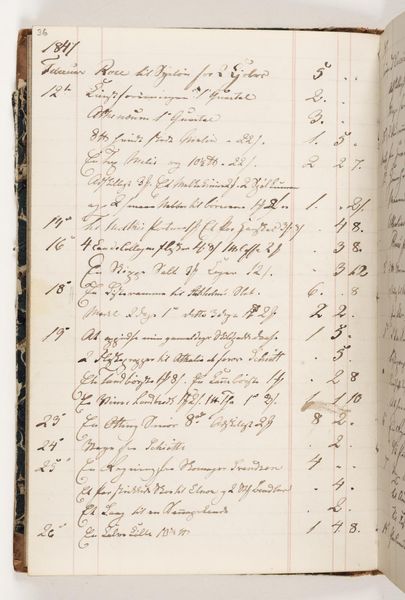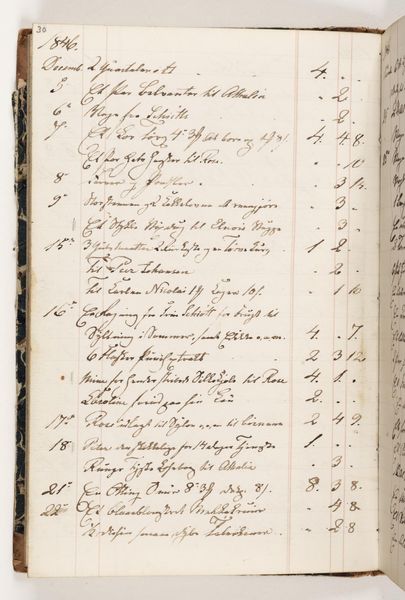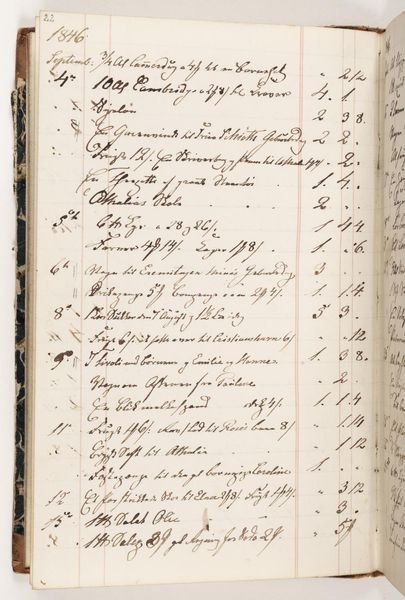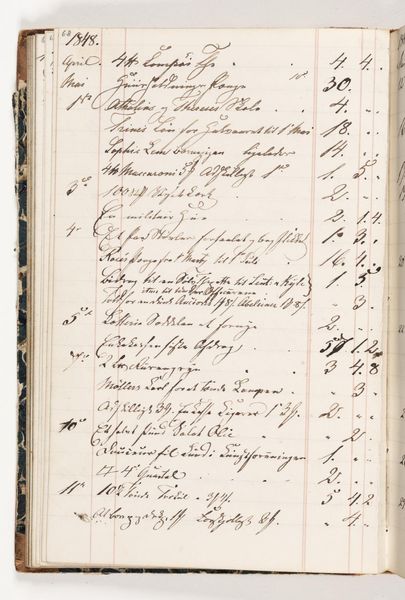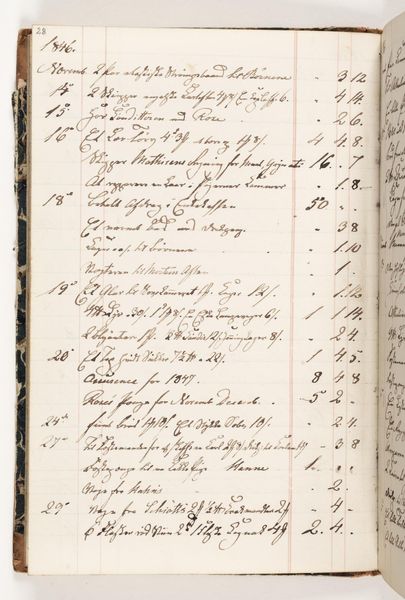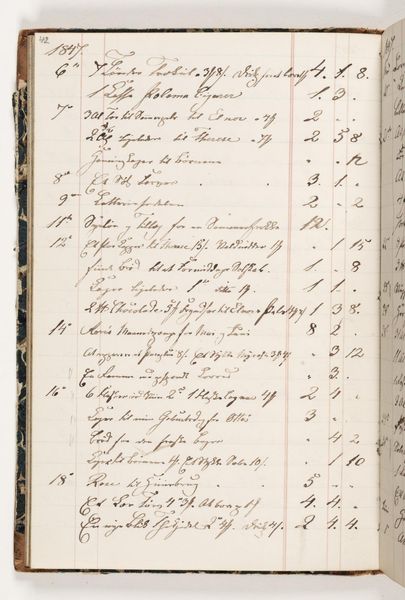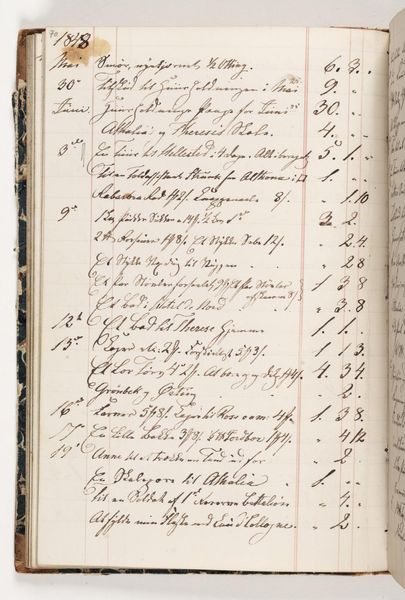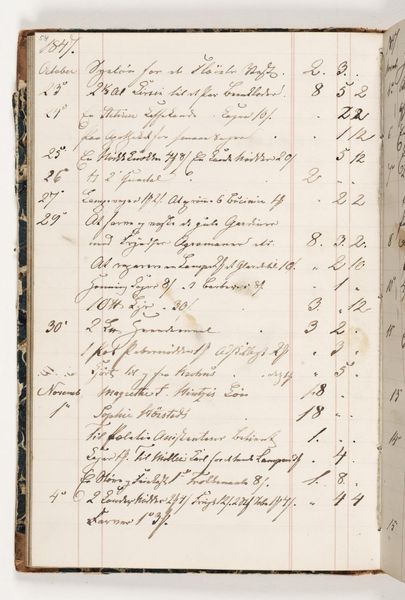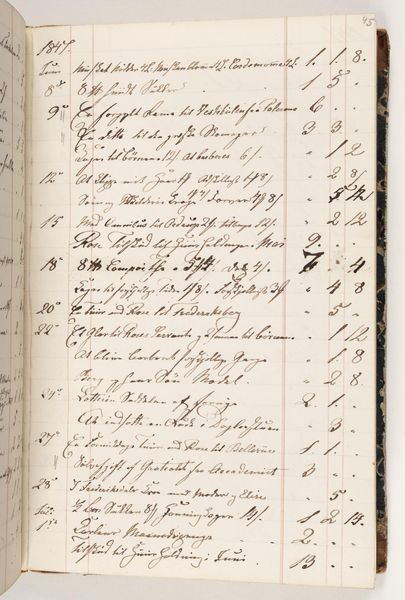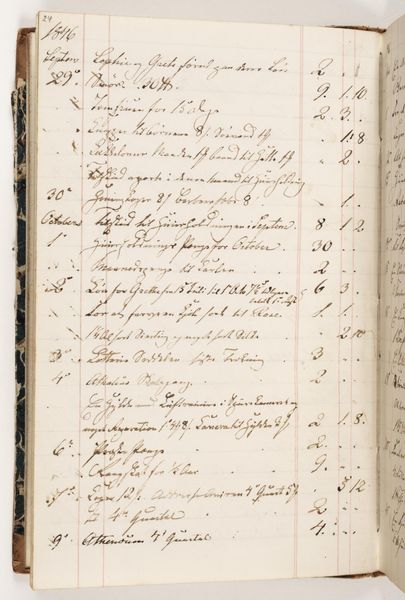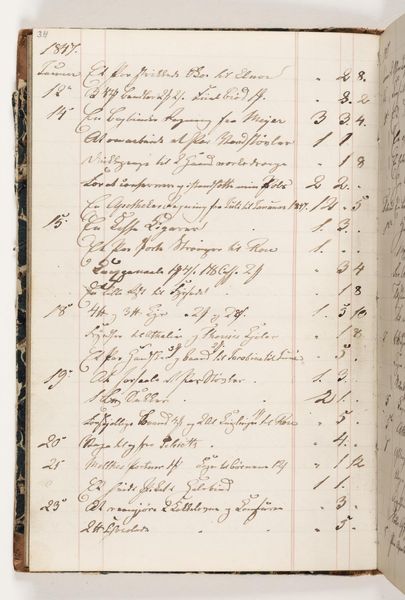
drawing, paper, ink
#
drawing
#
16_19th-century
#
paper
#
ink
Dimensions: 200 mm (height) x 130 mm (width) (bladmaal)
Curator: Martinus Rørbye offers us a glimpse into 1848 with this drawing, aptly titled "Regnskab 1848." It's part of the collection at the SMK, crafted with ink on paper. It seems deceptively simple at first glance. What's your initial reaction? Editor: My first impression is the texture; even in a reproduction, I can feel the paper's age. The neat lines and tight script give the sense of meticulous labor, perhaps almost obsessive record-keeping, that seems inherent to the material’s function. Curator: Precisely. Rørbye was not just an artist; understanding the political turmoil of 1848 is key here. We must remember this ledger exists amidst widespread social and political upheaval, including revolutionary movements that emphasized ideas of emancipation. This artistic act transcends documentation. It also speaks to socio-economic shifts that destabilized communities, and even personal or professional crises. The neatness is fascinating; it's not just about fiscal accuracy but also social accountability during moments when institutions could appear volatile. Editor: Absolutely. Thinking about labor practices, too, one might wonder about Rørbye's connection to accounting practices in this time period, or even to the very concept of an audit trail—paper that can provide insight into the production of other kinds of value. Was Rørbye grappling with how artisanal practices such as art, relate to bookkeeping or perhaps commerce as well? How would materiality change its function and its message? Curator: I think we can push the point of "value." By transforming a commonplace document—a financial record—into art, Rørbye poses questions about artistic worth and societal perception. Consider that drawings like these, rooted in societal transitions and unrest, may challenge notions of history being "strictly" what we see in galleries; this everyday act has a critical significance, wouldn't you say? Editor: I concur wholeheartedly. Ultimately, Rørbye turns the expected purpose of this notebook page into a fascinating lens through which we might question accepted canons about social and artistic history in general. Thank you for that wonderful deconstruction of its layered significance! Curator: The pleasure was all mine. It's this blend of socio-historic context, I feel, and his skillful transformation of everyday work items that brings depth and perspective to an image that might at first appear unremarkable.
Comments
No comments
Be the first to comment and join the conversation on the ultimate creative platform.
